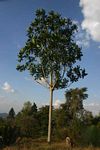Flora of Zimbabwe: Cultivated plants
Spermatophyta: Dicotyledonae: Metachlamydeae: Gentianales
Flora of Burundi: Loganiaceae
Flora of Caprivi: Loganiaceae
Flora of the DRC: Loganiaceae
Flora of Malawi: Loganiaceae
Flora of Mozambique: Loganiaceae
Flora of Rwanda: Loganiaceae
Flora of Zambia: Loganiaceae
Flora of Zimbabwe: Loganiaceae
BHL (Biodiversity Heritage Library): Loganiaceae
EOL (Encyclopedia of Life): Loganiaceae
GBIF (Global Biodiversity Information Facility): Loganiaceae
Google: Web - Images - Scholar
iNaturalist: Loganiaceae
IPNI (International Plant Names Index): Loganiaceae
JSTOR Plant Science: Loganiaceae
Mansfeld World Database of Agricultural and Horticultural Crops: Loganiaceae
Wikipedia: Loganiaceae
Plants of the World Online: Loganiaceae
Tropicos: Loganiaceae
Loganiaceae
Leeuwenberg, A.J.M. (1983) Loganiaceae (inc. Buddlejaceae) Flora Zambesiaca 7(1)
Description of the family
Links to cultivated genera: View: living plant images - herbarium specimen images - all images for this family
| Genus | Content |
Other sources of information about Loganiaceae:
Our websites:
Flora of Botswana: LoganiaceaeFlora of Burundi: Loganiaceae
Flora of Caprivi: Loganiaceae
Flora of the DRC: Loganiaceae
Flora of Malawi: Loganiaceae
Flora of Mozambique: Loganiaceae
Flora of Rwanda: Loganiaceae
Flora of Zambia: Loganiaceae
Flora of Zimbabwe: Loganiaceae
External websites:
African Plants: A Photo Guide (Senckenberg): LoganiaceaeBHL (Biodiversity Heritage Library): Loganiaceae
EOL (Encyclopedia of Life): Loganiaceae
GBIF (Global Biodiversity Information Facility): Loganiaceae
Google: Web - Images - Scholar
iNaturalist: Loganiaceae
IPNI (International Plant Names Index): Loganiaceae
JSTOR Plant Science: Loganiaceae
Mansfeld World Database of Agricultural and Horticultural Crops: Loganiaceae
Wikipedia: Loganiaceae
Plants of the World Online: Loganiaceae
Tropicos: Loganiaceae
